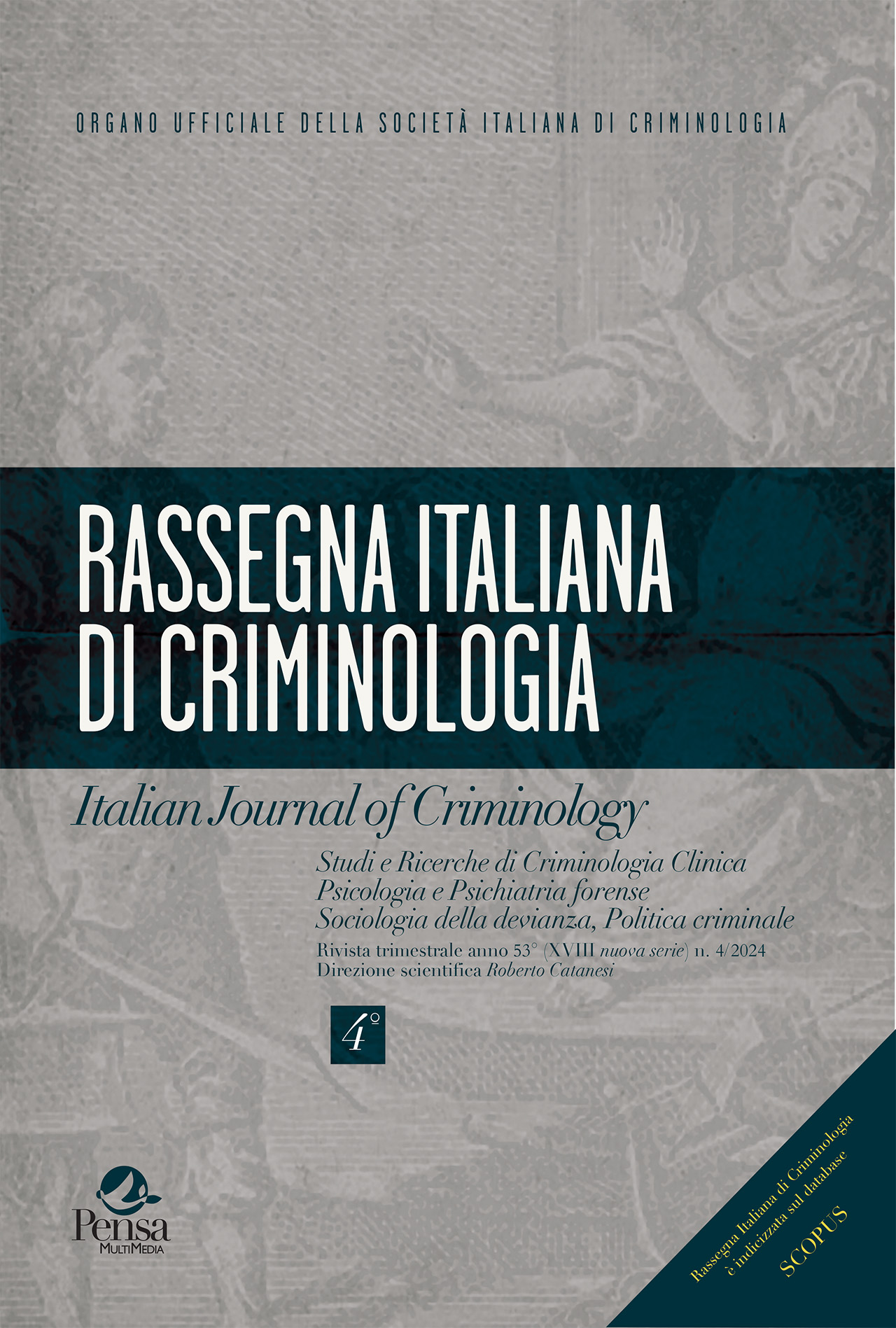Human trafficking in the digital society: state of the art, theoretical perspectives and future directions
DOI:
https://doi.org/10.7347/RIC-042024-p317Abstract
The emergence of digital technologies, now increasingly present and ubiquitous, has profoundly and comprehensively permeated every aspect of contemporary society: this transition process has also impacted (and continues to impact) crime, especially in its more rational and organized forms. In this context, the process of digitalization of human trafficking is nothing new, but it is only recently that the topic has taken an important place in the public debate, on the agenda of institutions and in the attention of academics. Academic knowledge on the subject seems limited and fragmented, especially compared to the extensive criminological production that has dealt with the more traditional aspects of the offline dimension of the phenomenon: it is therefore not easy to get a clear picture of the current state of research. Against this background, this study aims to i) define the current state of the art on the relationship between new technologies and trafficking in human beings, indicating which areas seem to be sufficiently analysed and which seem to be under-researched; ii) propose some hints and theoretical perspectives for future criminological research in this area (based on the findings). The methodology consists of a systematic literature analysis carried out by searching for a series of keywords in 15 databases. The selected contributions (161) were classified and analysed, according to their subject matter, in the following categories: criminal activities, actors (perpetrators and victims), social responses (formal and informal), criminological research (methods and techniques).
Downloads
Published
Issue
Section
License
Copyright (c) 2025 Gabriele Baratto; Beatrice Rigon

This work is licensed under a Creative Commons Attribution 4.0 International License.





